- From:The Australian
- March 30, 2013

Pope Francis celebrates Palm Sunday Mass, in St. Peter's Square, at the Vatican on March 24, 2013. Picture: AP Source: AP
EASTER is the most solemn event of the Christian calendar. Holy Week, as it is traditionally called, encompasses Jesus' triumphant entrance into Jerusalem on a donkey, as those palms wave, through to the breaking of bread at the Last Supper, which became the world's first communion, to his trial and crucifixion and then to the close of the cycle that is celebrated tomorrow, the resurrection: the empty tomb, the risen Lord.
St Paul, the man who is sometimes credited with putting Christianity into something like a systematic form, says in his uncompromising way, "If Christ be not risen our faith is vain."Whatever else this may mean, it certainly points to the fact the figure who emerges on the third day and says to Mary Magdalene, "Woman, why do you weep?" and "Touch me not" is the Christ who triumphs over the corruption and degradation of the world, the figure who shines through a thousand great paintings that try to capture in human form the glory of the face of God.
Is it any wonder that the pagan traditions of fertility, of celebrating the sap and new shoots of spring, should have attached themselves to this story after it finally conquered the Roman Empire? That empire that not only persecuted it but forced its central tragedy with an execution ("suffered under Pontius Pilate")?
Recommended Coverage
In The Man Born to be King, the cycle of World War II radio plays about the life of Christ written by Dorothy L. Sayers, she dramatises the Gospel story that the wife of Pilate (the governor of Judea, the man who said of Jesus, "I am innocent of the blood of this man" and then washed his hands) was disturbed by this Jewish prophet character.
It is Pilate's wife who says that she has suffered much in a dream because of this man. In Sayers's play what she dreams is that she hears a cry in Greek saying that the great god Pan is dead and then, over and over, she hears a multitude of voices saying, in all the languages of the world, "suffered under Pontius Pilate". Christianity was not the first creed to have a dying god myth. Mithraism was rife in the Roman Empire just as a lot of people in the ancient world, from the time of the Greeks, believed, as the tragedian Sophocles seems to have, that there was one God beyond the murmur of the many.
The radiance of the Logos we hear of at the start of St John's Gospel - that Logos that Christians think was incarnated in dark, obscure Bethlehem - has a mighty Greek ancestry, even though the child in the straw was a Jew of the House of David.
So the dream of Pilate's wife, that fused together reverberations of classical civilisation and pre-Christian mythology and the haunting figure of Jesus, makes sense in relation to this stark and terrible story of desolation and death that is also, quite rightly, at its climax, a time of festivity. Of Easter bunnies, of Easter eggs, which our culture translates into chocolate, laden with the chemical elements that give us a high that in its distant way is like the lilt of love.
But the way in which the Christian Easter story absorbs the pagan elements, from lapping up the idea of fertility to the connection with the dying God, makes sense.
Pope Benedict XVI, who abdicated recently, was very impressed by the story CS Lewis, the author of that re-enactment of the Easter story in the first of his Narnia books, The Lion, the Witch and the Wardrobe, told of being a young atheist at Oxford and hearing a distinguished scholar say, "All this dying god stuff. It appears to have happened once."
"It did not" is the cry we have heard incessantly from the Richard Dawkinses in recent years. If the emperor Julian, who flirted with Christianity, could say - in the poet Swinburne's translation - "Thou hast conquered, oh pale Galilean", then the evangelical atheist movement of recent years has wanted to deny the power of the images, sounds and words the Easter story has bequeathed to the world, as if religion is something that rots the mind the way chocolate rots teeth.
How, though, could that possibly be done? Think of that stunning way you can stumble on a Caravaggio in a Roman church that illuminates like lightning in a shroud of darkness the central poetic truths of this Passion story. Or the place in cultural memory that Michelangelo's Pieta occupies. Or, in an opposite Germanic way, Matthias Grunewald presents us with an image of the dead Christ that looks like the brutal annihilation of his very being. And it's also the case that the most celebrated painting in the history of the world, Leonardo da Vinci's The Last Supper, dramatises that moment in the upper room when Jesus took bread and broke it and gave it to his disciples, saying it was his body and they should eat it in memory of him.
Wars were fought and sincere people were burned at the stake over the meaning of what Christ said then, and it's true that the history of Christianity is also a history of infamy. That is hardly a refutation of whatever grace and truth is to be found in these images and the story they give form to.
It's characteristic of the moody grandeur and dramatic variegation of the story of Easter as it appears in the Gospels that the institution of the Eucharist, the great feast of the Christian calendar that is known as Maundy Thursday or Holy Thursday, should come just before the agony in the garden when Jesus confronts the prospect of his death and says, after sweating blood, with the weight of the evil of the world beating down his brain, if the cup cannot pass by without his drinking it, "Thy will be done."
Maundy Thursday, the day of communion and of the last supper, of death and the sacrament of life through the body of Christ, is the day when high and mighty people wash the feet of the lowly, the young, the down and out. This week the newly installed Pope Francis - the man who took the name of the most radical saint of the gospel of poverty, the man from Assisi - washed the feet of some boys in a junior prison.
Say what? With storm clouds and deluges of child abuse pouring down on the church from the heavens like a vengeance, does he have to touch the feet of kids? Any media adviser would tear his hair out, but this chap from Buenos Aires doesn't seem to give a damn about media advisers, and perhaps that's part of the saintliness, not the stupidity, of the man.
It's the Gospel story of Easter week that outstares everything and has shaped so much of the high art as well as popular entertainment that makes us inhabit this story like no other.
Some unimaginable archeologist from another galaxy could deduce the crucifixion-resurrection as a central motif of our civilisation from Lewis's Narnia version of it.
And when, in the early 1960s, Bob Dylan sang in that song of protest: "You'll have to decide/ Whether Judas Iscariot/ Had God on his side", the weight of all the icons of the Passion story was behind the voice of the Jewish boy from the midwest who came to embrace Christianity.
The liturgy of this Holy Week certainly embraces Judaism and the laments and consolations of the Old Testament, like a doom and a destiny. Jesus said, after all, he had come not to do away with one jot or tittle of the law but to bring it to fulfilment. Anyone who thinks the Judeo-Christian tradition scants the depths of human pain and the temptation to blame any principle that might claim to govern the universe should try on Psalm 88 (87 for Catholics), the psalm that churchgoers will be hearing this Holy Saturday:
O lord God of my salvation, I have cried day and night before thee:
Let my prayer come before thee: incline thine ear unto my cry;
For my soul is full of troubles: and my life draweth nigh unto the grave.
I am counted with them that go down into the pit: I am as a man that hath no strength:
Free among the dead, like the slain that lie in the grave, whom thou rememberest no more: and they are cut off from thy hand.
Thou hast laid me in the lowest pit, in darkness, in the deeps.Of course within a few hours people in Catholic and Anglican churches will be shielding their candles at midnight mass in preparation for the moment when they are uncovered and the church will be flooded with light.
The face of the world is renewed and Christians reaffirm their credo just as they renounce the devil and all his works and all his pomps - which, according to a persuasive recent translation, is to renounce the "glamour of evil".
The Easter story has its own power and anti-glamour in the face of its terrible unfolding. Literary scholar Erich Auerbach believed that the unvarnished plainness of the Gospel narratives had a fundamental influence on Western realism and the particular shape that mimesis, the representation of life, has for us.
It's fascinating how closely we cleave to the Easter story in most adaptations of it. That's true of Andrew Lloyd Webber's Jesus Christ Superstar - which was a kind of rock oratorio before people such as Jim Sharman staged it as a dazzling musical. The most imaginative and the most haunting thing in Superstar is Mary Magdalene's I Don't Know How to Love Him, and it seems the sheer enigma of Christ, the fact Jesus provides the love that goes beyond desire - and partakes of the fact all love, if it is love, does - provoked Lloyd Webber to write an unforgettable melody.
And this attention to the bones of the Easter story that you just can't get around dominates every version of it, from the Giotto frescoes to Pier Paolo Pasolini's The Gospel According to St Matthew.
It also dominates Bach's treatment of the Holy Week saga in his oratorios St John Passion and St Matthew Passion.
In each of these we can hear the majesty, the profundity and the complexity of the baroque, transfigured by Bach's genius, but using with absolute urgency the recitative of the Gospels' narrative - as if the greatest music ever composed in relation to this greatest story ever told (to use the old adage) could be composed only by giving primacy to the words of the evangelists and the inspirational melodies of the Lutheran chorales.
Bach, of course, creates a world of sublimity through these mediums but we get the strongest sense that for him the sublimity inhered in the material in the first place. Pasolini uses Bach just as he uses African Missa Luba in his 1964 masterpiece, which he dedicated to Pope John XXIII. He also uses a wobbly camera and a cast of amateur actors - Pasolini's mother plays Mary - to create a life of Christ that seems not only neo-realist in style but has the apparitional appearance of capturing (as it were) real-life events on film. And so much of the power and the glory of this dazzling black-and-white film has a reality none of the Hollywood epics can rival. And nor can Franco Zeffirelli's Jesus of Nazareth, with its very literate Anthony Burgess script. Pasolini simply has Matthew's script and, in combination with his depth of feeling for the subject, the effect is sublime.
That's not true of Mel Gibson's The Passion of the Christ, the attempt to translate snatches of the Passion story back into an Aramaic Jesus and his contemporaries might have spoken (even though the Gospels are written in Koine Greek, the argot of the Roman Empire), though it must count as one of the wonders of the world. And so does Martin Scorsese's dramatisation of Nikos Kazantzakis's fanciful free association in The Last Temptation of Christ.
But the Passion story itself, preferably in an old translation such as the King James, is the best bet. Think of the moment when Judas betrays Jesus with a kiss. Think of him saying to Peter, "Before the cock crows you will deny me thrice" or Peter's angry terrified cry, "I know not the man." Caiaphas, the high priest, rends his garments when Jesus says - knowing that it will be heard as the ancient claim to divinity - "Your own lips have said it."
Think of Pilate's question, "Are you a king then?" and Jesus' answer that his kingdom is not of this world but that he speaks for the truth that illuminates everyone who comes into the world. "What is truth?" is all Pilate can say. Think too of his sneer, "Am I a Jew?"
At the same time he is troubled and asks the crowd if they want him to crucify their king. "We have no king but Caesar," is their reply. Pilate shows them Jesus scourged and crowned with thorns. "Behold the man," he says, to no avail. And so to his great cop-out and the way of the cross.
Nothing is more moving in the whole of the Passion story than the thief on the cross next to Jesus who says to him, "Remember me when you come into your kingdom." And Jesus replies, "I tell you that this night you will be with me in Paradise."
And there is the great terrible cry from the cross, Eli Eli lama sabachthani - "My God, my God, why hast thou forsaken me?"
Nothing in Western culture is starker than the story of Good Friday. It is the one day mass cannot be celebrated because it is the day when Christians -Protestant or Catholic - summon up the starkest liturgy they can to commemorate the thing that the fundamental Christian service re-enacts.
It makes the blinding light that overtakes the darkness on Easter Day all the more startling. Imagine resurrection coming after this. Throughout all the dark days of Soviet communism no one could stamp out the great exchange of Orthodox Christians at Easter. Christos Anesti! they say to the person next to them, and reply is Alithos Anesti! - "Christ is risen!" "He has risen indeed!"
....






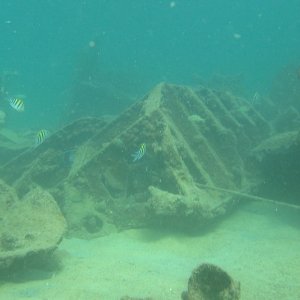
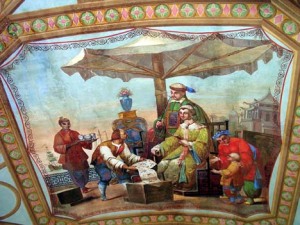
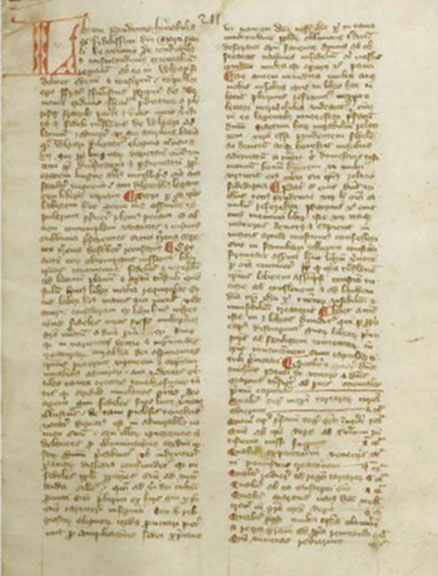
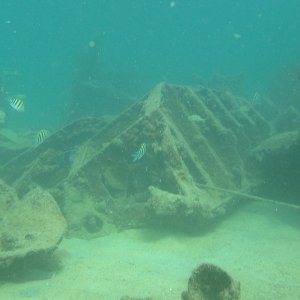
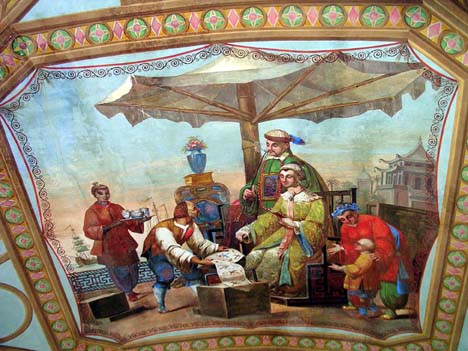
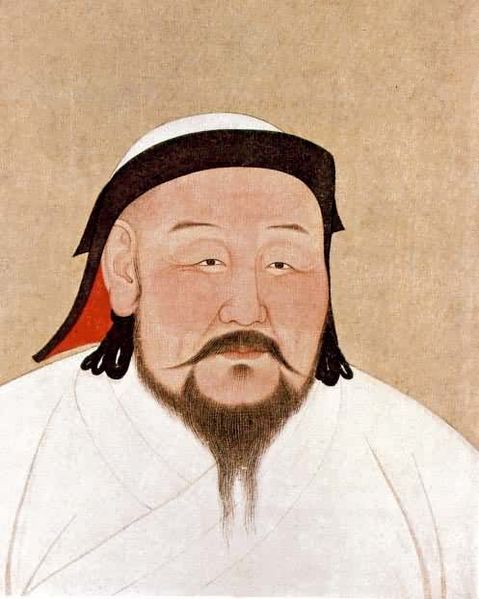


















 Play Slideshow
Play Slideshow